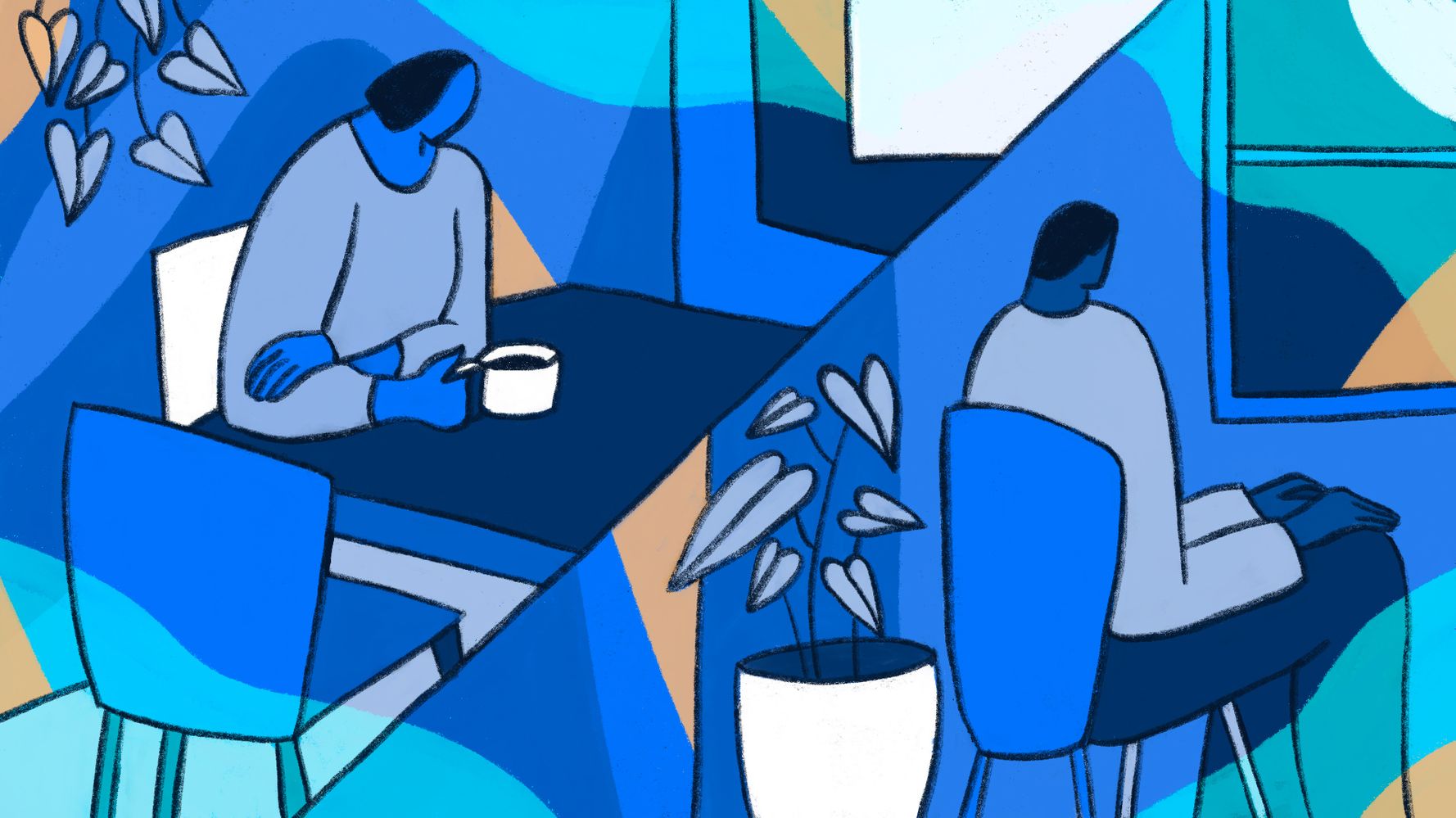It’s been a little over a year since the words “COVID-19” and “coronavirus” began buzzing in the news. Now, more than half a million people have lost their lives to the coronavirus in the United States alone, leaving millions more behind to mourn their loved ones.
The pandemic has also led to extreme job and housing insecurity, and emerging research has revealed that an influx of COVID-19 patients are dealing with chronic health issues after recovering from the virus. To boot, lockdowns — though necessary — essentially pressed the “pause” button on many special moments and major life milestones. Understandably, many people are experiencing grief caused by COVID-19.
Mental health experts say that there are different ways to process pandemic-related loss, even if you didn’t lose someone you love: The first step is recognizing that there are myriad reasons someone may be grieving, and all of these reasons are valid.
“Grief is a reaction to loss and not all loss is about death,” said Marianne Trent, a clinical psychologist and author of “The Grief Collective: Stories of Life, Loss & Learning to Heal.” “There’s no such thing as a grief hierarchy, grief is grief.”
Seeking out a therapist can help you to work through feelings of grief. While the pandemic has highlighted the need for more mental health providers, the option of teletherapy has fortunately become more widely available. This makes grief counseling more accessible for those mourning.
If you’re new to therapy — or even if you’ve previously sought out counseling — sessions may look a little different than they did pre-coronavirus. Trent said that COVID-19 check-ins are part of every session, and “pandemic grief and loss is now a feature of each client’s therapeutic work either as a standalone referral, or in addition to their original presenting problems.”
Victoria Goldenberg, a licensed clinical social worker who works with the Hope for Depression Research Foundation, explained that processing through grief in therapy often means sitting with both the welcomed memories and feelings, as well as the uncomfortable or downright painful moments.
“In the case of grief, there’s coping and there’s moving on. There has to be a level of acceptance that comes. You have to grieve. But, there needs to be time for mourning,” Goldenberg said. “You can’t say, ‘OK, well that happened and it’s time to move on.’”
“In the case of grief, there’s coping and there’s moving on. There has to be a level of acceptance that comes. You have to grieve. But, there needs to be time for mourning.”
– Victoria Goldenberg
According to Goldenberg, attending an online support group can be a great source of comfort and an avenue to discuss feelings of loss. Though most in-person meetings are canceled due to COVID-19 guidelines, these online peer groups can serve as a powerful reminder that you’re not alone in your experiences.
What’s more, you can work through grief outside of a therapeutic setting. Mental health experts agree that creative outlets can also serve as a valuable tool for processing COVID-related losses. A growing body of evidence has shown that practicing art — from painting to dance — can alleviate anxiety and depression, and promote overall mental wellness.
“Expressing your feelings is a large component of the grief process,” said Lindsay Lederman, the clinical director of The Art Therapy Project. “Using art or other creative processes to express these thoughts and feelings, which again, often aren’t simple or one-dimensional, can lessen the burden of holding on to our difficult emotions on our own.”
Goldenberg has encouraged clients to paint or craft memorials in honor of loved ones that have passed. She also had clients decorate graduation caps to commemorate this rite of passage, and pick up new hobbies in the wake of serious loss as a form of healing.
The advice of practicing self-care has come to sound somewhat like a platitude, especially when the mental health toll of the pandemic can feel all too overwhelming at times. However, identifying restorative, simple and small activities — such as journaling or adopting healthy bedtime habits — can help you begin to build a strong self-care routine that keeps you grounded while mourning.
“We are all just doing our best to get through each day with the resources we have.”
– Marianne Trent
As Lederman explained, grief can often leave you in “autopilot mode,” but “taking the time to sit, feel your feelings and do something you need for yourself is a small thing you can do to support the grief process.”
Studies have debunked the popular idea that someone will neatly go through the five stages of grief, which are denial, anger, bargaining, depression and acceptance. In reality, there is no timestamp on mourning, or the feelings associated with loss. As Trent further explained, “Grief is not a linear process and people may move backwards and forwards, into and out of the stages across minutes, months and years.”
Mourning is complex, at times messy and exhausting. Continuing to navigate living an ongoing pandemic while dealing with grief related to the pandemic can complicate feelings of loss even further. Identifying what works for you as you process loss and mourn will be a process within itself.
“Give yourself permission to treat yourself compassionately,” Trent said. “We are all just doing our best to get through each day with the resources we have.”


